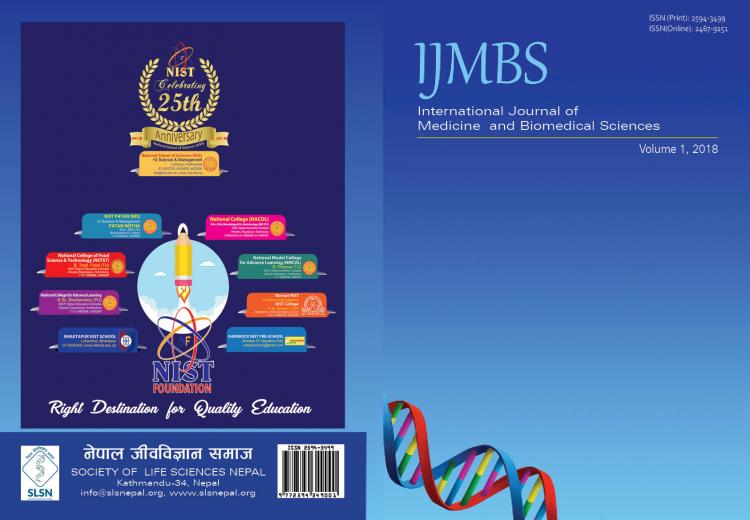Antibacterial and Antifungal Activities of Micromeria biflora (Leaves).
DOI:
https://doi.org/10.55530/ijmbiosnepal.v1i1.7Keywords:
Herbal medicines, Antibacterial, AntifungalAbstract
Background: Herbal medicines have been practiced for thousands of centuries by tribes all over the world. We aim to study extraction, fractionation, antibacterial and antifungal activity of micromeriabiflora.
Methodology: Sample was washed properly with de-ionized water, solvents used (i.e. chloroform, ethyl acetate, n-hexane and methanol) were filtered and added. Some amounts of dehydrated reagents to purify the solvents before using. Shad dried plant powder was chopped and soaked in methanol for 10 days Dimethyl sulfoxide(DMSO) was used as solvent because it did not show any activity against bacteria and also it possess polar and non-polar groups therefore, in dimethyl sulfoxide most of the polar and non-polar compounds are soluble. The antibacterial bioassay was done by Agar Well Diffusion method, by measuring the zone of inhibition against the test microorganisms. Two fungal strains i.e. Alternaria, Fusariumoxysporium were used for antifungal activities.
Results: At 5mg/mm the detailed spectrum of antibacterial activity of various fraction i.e. n-hexane, chloroform, ethyl acetate, and methanol was determined. All fractions showed activity against fungal species. Highest activity was shown by Chloroform fraction against Fusariumoxysporium giving wider zone of 10.2 (mm). Ethyl acetate fraction against Alternaria was very less active giving lowest value of 5.9 (mm).
Conclusion: The results of antibacterial activity revealed that methanol show highest activity among all fractions against salmonella typhi. The methanol extract of Micromeriabiflora gave the widest zone of inhibition (16.1mm) against salmonella typhi using agar well diffusion. The results therefore established a good support for the use of Micromeriabiflora in traditional medicine.
Downloads
Published
How to Cite
Issue
Section
License

This work is licensed under a Creative Commons Attribution 4.0 International License.
IJMBioS follows the following Terms and License of the manuscript under Attribution-NonCommercial 4.0 International (CC BY-NC 4.0) where Author and Journal are can Share — copy and redistribute the material in any medium or format and Adapt — remix, transform, and build upon the material, and it is Non-Commercial.





